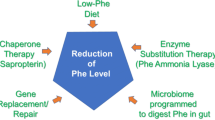Abstract
Background
The oculocerebrorenal syndrome of Lowe gene (OCRL) is located on chromosome Xq25-26 and encodes an inositol polyphosphate-5-phosphatase (OCRL-1). Mutations in this gene cause Lowe syndrome (LS) or type 2 Dent disease, of which low-molecular-weight (LMW) proteinuria is a characteristic feature. Megalin is considered to play an important role in the development of renal tubular proteinuria. Two forms of megalin are excreted into the urine: full-length megalin (C-megalin) and megalin ectodomain (A-megalin). We have explored the role of megalin in the development of LMW proteinuria in patients with OCRL mutations by determining urinary megalin fractions.
Methods
We measured A- and C-megalin in spot urine samples from five male patients with OCRL mutations (median age 9 years), using sandwich enzyme-linked immunosorbent assays, and adjusted the obtained values for excreted creatinine. The results were compared with those of 50 control subjects and one patient with type 1 Dent disease (T1D).
Results
All patients demonstrated normal levels of urinary C-megalin. However, patients with OCRL mutations or T1D showed abnormally low levels of urinary A-megalin, with the exception of one 5-year-old boy with LS, who was the youngest patient enrolled in the study.
Conclusions
Decreased excretion of urinary A-megalin in four out of five patients with OCRL mutations suggests that LMW proteinuria may be caused by impaired megalin recycling within the proximal tubular cells. Homologous enzymes, similar to inositol polyphosphate-5-phosphatase B in mice, may help to compensate for defective OCRL-1 function during early childhood.


Similar content being viewed by others
Change history
18 January 2022
A Correction to this paper has been published: https://doi.org/10.1007/s00467-021-05361-9
References
Oltrabella F, Pietka G, Ramirez IB, Mironov A, Starborg T, Drummond IA, Hinchliffe KA, Lowe M (2015) The Lowe syndrome protein OCRL1 is required for endocytosis in the zebrafish pronephric tubule. PLoS Genet 11:e1005058
Biemesderfer D (2006) Regulated intramembrane proteolysis of megalin: linking urinary protein and gene regulation in proximal tubule? Kidney Int 69:1717–1721
Ogasawara S, Hosojima M, Kaseda R, Kabasawa H, Yamamoto-Kabasawa K, Kurosawa H, Sato H, Iino N, Takeda T, Suzuki Y, Narita I, Yamagata K, Tomino Y, Gejyo F, Hirayama Y, Sekine S, Saito A (2012) Significance of urinary full-length and ectodomain forms of megalin in patients with type 2 diabetes. Diabetes Care 35:1112–1118
Seki T, Asanuma K, Asao R, Nonaka K, Sasaki Y, Olivia Trejo JA, Kurosawa H, Horikoshi S, Tomino Y, Saito A (2014) Significance of urinary full-length megalin in patients with IgA nephropathy. PLoS One 9:e114400
Norden AG, Lapsley M, Igarashi T, Kelleher CL, Lee PJ, Matsuyama T, Scheinman SJ, Shiraga H, Sundin DP, Thakker RV, Unwin RJ, Verroust P, Moestrup SK (2002) Urinary megalin deficiency implicates abnormal tubular endocytic function in Fanconi syndrome. J Am Soc Nephrol 13:125–133
Saito A, Pietromonaco S, Loo AK, Farquhar MG (1994) Complete cloning and sequencing of rat gp330/“megalin”, a distinctive member of the low density lipoprotein receptor gene family. Proc Natl Acad Sci USA 91:9725–9729
Prabakaran T, Nielsen R, Larsen JV, Sørensen SS, Feldt-Rasmussen U, Saleem MA, Petersen CM, Verroust PJ, Christensen EI (2011) Receptor-mediated endocytosis of α-galactosidase A in human podocytes in Fabry disease. PLoS One 6:e25065
Christensen EI, Birn H, Storm T, Weyer K, Nielsen R (2012) Endocytic receptors in the renal proximal tubule. Physiology (Bethesda) 27:223–236
Wang SS, Devuyst O, Courtoy PJ, Wang XT, Wang H, Wang Y, Thakker RV, Guggino S, Guggino WB (2000) Mice lacking renal chloride channel, CLC-5, are a model for Dent’s disease, a nephrolithiasis disorder associated with defective receptor-mediated endocytosis. Hum Mol Genet 20:2937–2945
Christensen EI, Devuyst O, Dom G, Nielsen R, Van der Smissen P, Verroust P, Leruth M, Guggino WB, Courtoy PJ (2003) Loss of chloride channel ClC-5 impairs endocytosis by defective trafficking of megalin and cubilin in kidney proximal tubules. Proc Natl Acad Sci USA 14:8472–8477
Bökenkamp A, Ludwig M (2016) The oculocerebrorenal syndrome of Lowe: an update. Pediatric Nephrol. doi:10.1007/s00467-016-3343-3
Posor Y, Eichhorn-Gruning M, Haucke V (2015) Phosphoinositides in endocytosis. Biochim Biophys Acta 1851:794–804
Mehta ZB, Pietka G, Lowe M (2014) The cellular and physiological functions of the Lowe syndrome protein OCRL1. Traffic 15:471–487
Pirruccello M, De Camilli P (2012) Inositol 5-phosphatases: insights from the Lowe syndrome protein OCRL. Trends Biochem Sci 37:134–143
Madsen MG, Nørregaard R, Palmfeldt J, Olsen LH, Frøkiær J, Jørgensen TM (2012) Urinary NGAL, cystatin C, β2-microglobulin, and osteopontin significance in hydronephrotic children. Pediatr Nephrol 27:2099–2106
Hichri H, Rendu J, Monnier N, Coutton C, Dorseuil O, Poussou RV, Baujat G, Blanchard A, Nobili F, Ranchin B, Remesy M, Salomon R, Satre V, Lunardi J (2011) From Lowe syndrome to Dent disease: correlations between mutations of the OCRL1 gene and clinical and biochemical phenotypes. Hum Mutat 32:379–388
Imai Y, Harada Y, Kaneko K (2008) A case report of a child with Lowe syndrome initially followed as Dent disease with asymptomatic tubular proteinuria. (In Japanese) Jpn J Pediatr Nephrol 21:195–198
Acknowledgments
The authors are grateful to Prof. Takashi Igarashi, President of the National Center for Child Health and Development, Tokyo; Prof. Takashi Sekine (deceased), Toho University School of Medicine, Tokyo; and Dr. Kandai Nozu, Associate Professor, Department of Pediatrics, Kobe University School of Medicine, Hyogo, Japan. Urinary excretion of A- and C-megalin was measured by Denka Co. Ltd. This study was partly supported by the Mami Mizutani Foundation.
Author information
Authors and Affiliations
Corresponding author
Ethics declarations
Disclosure of potential conflicts of interest
AS received research grants from DENKA Co. Ltd.
Research involving human participants
All procedures performed in studies involving human participants were in accordance with the ethical standards of the institutional and/or national research committee and with the 1964 Helsinki declaration and its later amendments or comparable ethical standards.
Informed consent
Informed consent was obtained from the parents of all individual participants included in the study.
Rights and permissions
About this article
Cite this article
Suruda, C., Tsuji, S., Yamanouchi, S. et al. Decreased urinary excretion of the ectodomain form of megalin (A-megalin) in children with OCRL gene mutations. Pediatr Nephrol 32, 621–625 (2017). https://doi.org/10.1007/s00467-016-3535-x
Received:
Revised:
Accepted:
Published:
Issue Date:
DOI: https://doi.org/10.1007/s00467-016-3535-x




